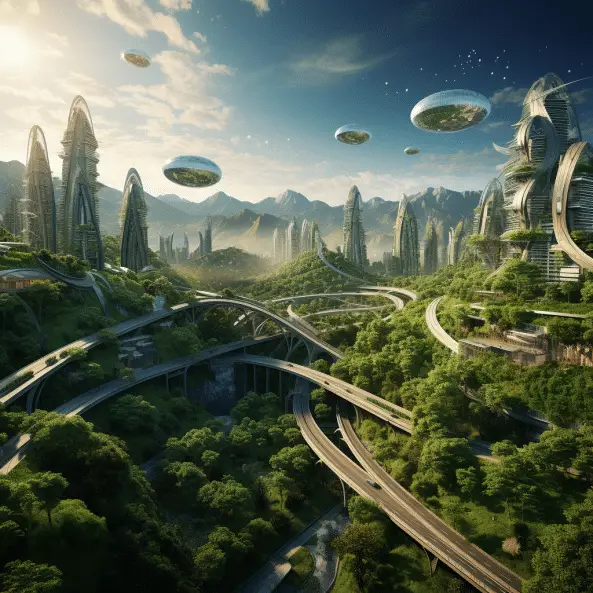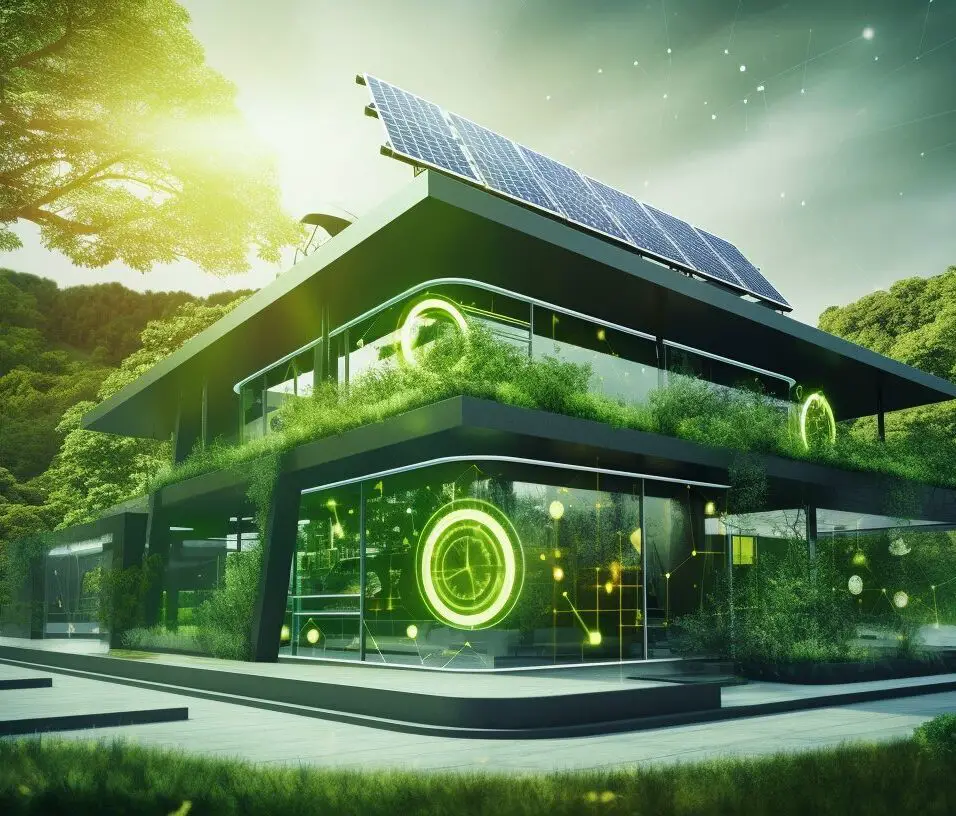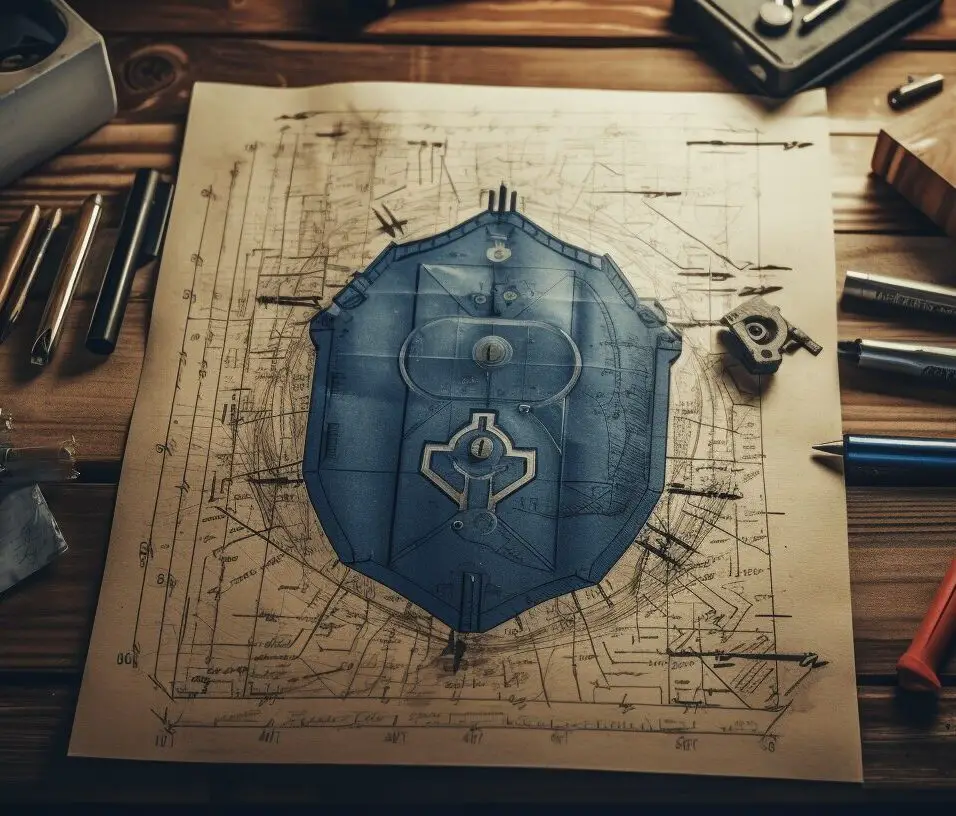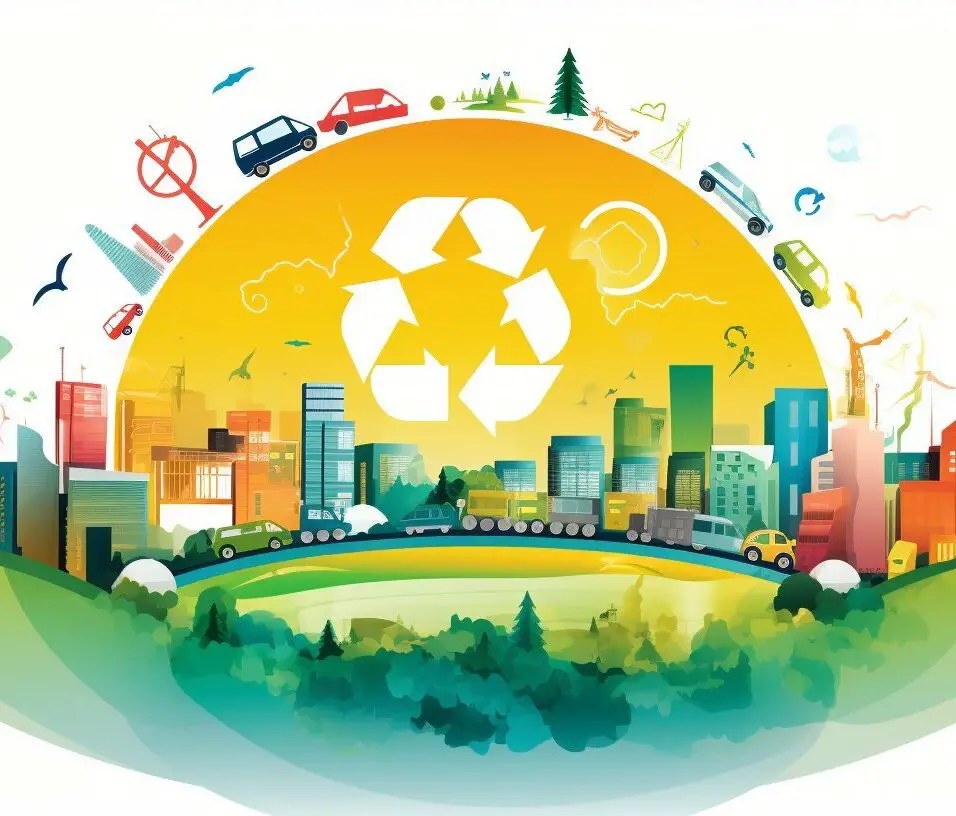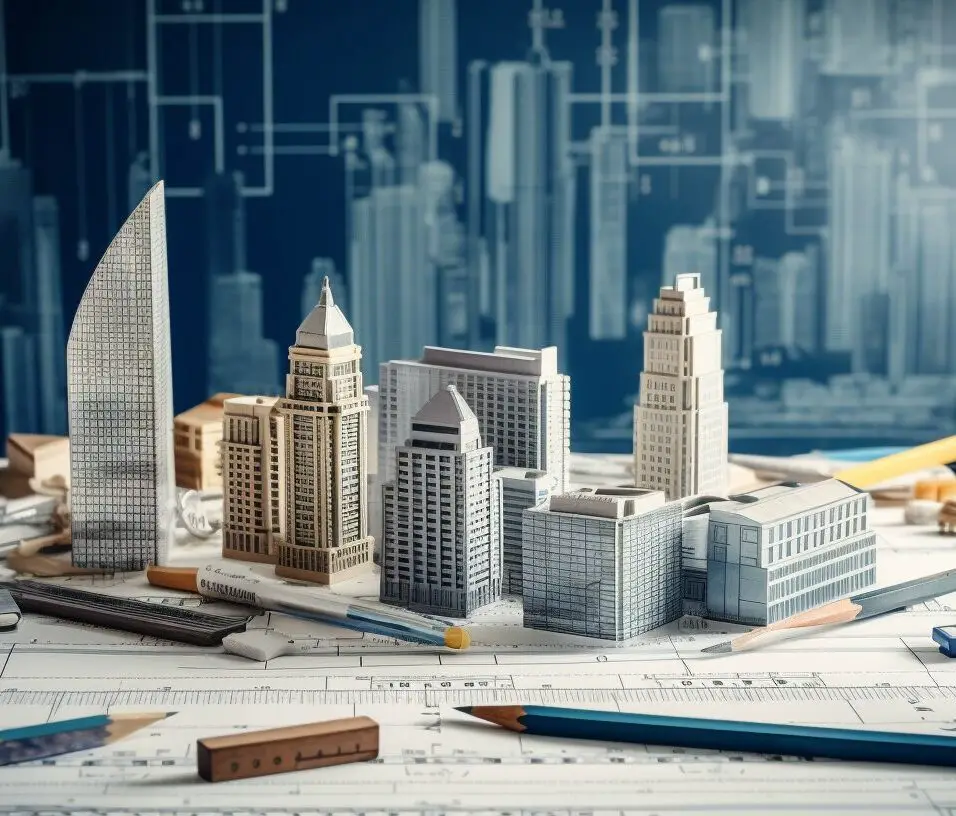Strategic Design: Shaping a Sustainable Future Vision
Due of pandemics and environmental disasters, designing for the future requires a different approach. Designers must think about the future and build sustainable solutions. One strategy to plan for the future is to study prior design practices. Design must also confront climate change, war, refugees, and mass monitoring. Applying UX methods to our life is another option. We must map our past, grasp our present, set values and goals, and imagine our future. We must iterate and adapt because life is dynamic. Future design includes “what-if” scenarios, design fiction, and critical design to challenge assumptions and encourage critical thinking. Future planning requires a proactive, strategic mindset and deep social and environmental knowledge.
Key Takeaways:
- Designing for the future requires considering the challenges of pandemics and environmental disasters.
- Looking back at previous design practices can inform future-oriented design.
- Addressing global issues like climate change and mass surveillance is crucial in design.
- Applying user experience (UX) methods enables proactive design for the future.
- Iterating, adapting, and exploring “what-if” scenarios are essential in designing for the future.
The Importance of Future-Oriented Design
Designers need to consider what the future will look like and how to create solutions that are relevant and sustainable. As the world faces challenges such as pandemics and environmental disasters, it becomes crucial to adopt a future-oriented approach in design. This involves envisioning the needs and requirements of tomorrow and shaping products and services that can withstand the test of time.
In order to design for the future, it is essential to learn from the past. By looking back at previous design practices, designers can gain valuable insights and inspiration. This allows them to build on what has already been done and create innovative solutions that address current and future needs. By understanding the successes and failures of the past, designers can make informed decisions and avoid repeating the same mistakes.
Sustainability is a key aspect of future-oriented design. Designers need to embrace sustainable practices and consider the environmental impact of their creations. This includes using eco-friendly materials, reducing waste, and promoting circular design principles. By incorporating sustainability into the design process, designers can help shape a future that is environmentally responsible and meets the needs of present and future generations.
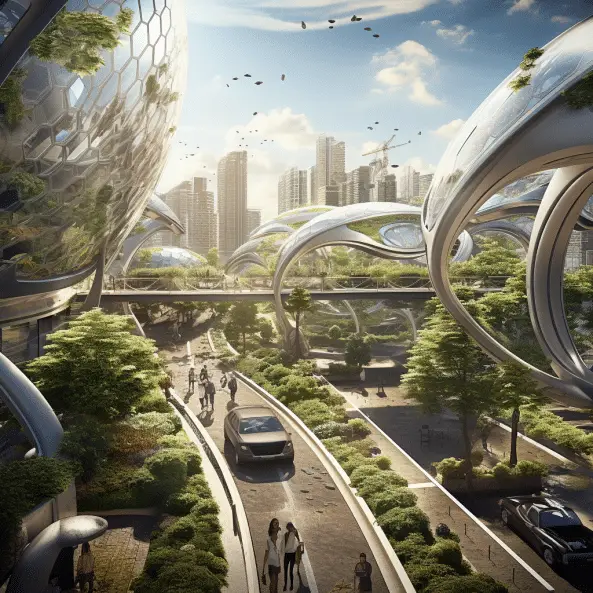
Table 1: Examples of Sustainable Design Principles
| Principle | Description |
|---|---|
| Life Cycle Assessment | Evaluating the environmental impact of a product throughout its entire life cycle |
| Design for Disassembly | Creating products that can be easily disassembled and recycled at the end of their life |
| Renewable Energy | Using renewable energy sources to power the production and operation of products |
Designers also need to address pressing global challenges through their work. Issues such as climate change, war, refugees, and mass surveillance have a significant impact on society. By integrating these challenges into the design process, designers can contribute to finding solutions and driving positive change. Future-oriented design should aim to create products and services that not only meet individual needs but also have a positive social impact.
To design for the future, designers can apply user experience (UX) methods to their own lives. This involves reflecting on the past, understanding the present, and envisioning the future. By creating a map of our past experiences, analyzing our current values and goals, and visualizing our future vision, designers can gain a deeper understanding of what is truly meaningful and design solutions that resonate with people’s lives.
Learning From the Past
By examining previous design practices, designers can gain valuable insights to inform their future-oriented design approach. Looking back at our history allows us to understand how design has evolved and identify successful strategies that can be applied to design for the future. It provides us with a foundation of knowledge and inspiration to build upon, helping us to avoid repeating past mistakes and find innovative solutions.
In the field of design, we can learn from the successes and failures of previous generations. For example, studying iconic designs from the past can offer valuable lessons on timeless aesthetics and functional principles. By analyzing the thought processes and intentions behind these designs, we can gain a deeper understanding of what makes them enduring and translate those principles into our future-oriented designs.
Table: Innovations in Design History
| Innovation | Time Period | Impact |
|---|---|---|
| Industrial Revolution | 18th-19th century | Introduction of mass production and standardized design |
| Bauhaus Movement | 1919-1933 | Integration of art and industry, emphasis on functionalism |
| Postmodernism | 1960s-1980s | Rejection of modernist principles, embrace of diversity and eclecticism |
In addition, studying earlier design techniques helps us comprehend their social and cultural context. We can better anticipate future consumers’ needs and aspirations using contextual knowledge, ensuring our designs match their values and expectations. We can create timeless and relevant solutions by adapting successful prior designs to present and future realities.
In conclusion, designing for the future requires learning from the past. We may learn from past design methods, identify successful strategies, and comprehend their social and cultural context. Designers may use this knowledge to create future-focused designs that are beautiful, functional, sustainable, and meaningful to people.
Addressing Global Challenges in Design
Designers have a responsibility to address pressing global challenges like climate change, war, refugees, and mass surveillance through their design solutions. As the world faces these complex issues, it is crucial for designers to consider the impact their work can have in shaping a better future.
One way to address these challenges is by integrating sustainability into design practices. Designers can prioritize the use of eco-friendly materials, energy-efficient solutions, and circular design principles to minimize the environmental footprint of their creations. By considering the life cycle of products and services, designers can ensure that their designs contribute to a more sustainable future.
Table: Examples of Sustainable Design Practices
| Challenge | Sustainable Design Practice |
|---|---|
| Climate Change | Designing energy-efficient buildings and transportation solutions |
| War | Creating designs that promote peace, reconciliation, and conflict resolution |
| Refugees | Designing inclusive and adaptable spaces to support refugee communities |
| Mass Surveillance | Developing privacy-enhancing technologies that empower individuals |
Designers can also address global issues by prioritizing the needs and well-being of vulnerable people like refugees and war victims. Designing inclusive venues and products that consider varied origins and experiences can promote social integration and access to needed services.
Designers can also solve mass surveillance issues by creating privacy- and data-protection solutions. Designers can empower people to govern their personal data and protect their privacy by creating user-friendly interfaces and transparent processes.
Designing for the future requires addressing global issues and creating new, constructive solutions. Designing for sustainability, inclusivity, and privacy can help create a more fair, resilient, and sustainable future.
Applying User Experience (UX) Methods
By applying user experience (UX) methods to our own lives, we can design a future that aligns with our values and goals. UX methods are typically used in product design to understand and improve the user’s experience, but they can also be applied to personal development and future planning. Let’s explore how we can use these methods to shape our own future.
Create a Map of Our Past
One of the first steps in designing for the future is to map out our past experiences. This involves reflecting on our journey so far, identifying key moments, successes, and challenges. By understanding our past, we can gain insights into what has shaped us and what patterns have emerged. This map acts as a foundation for designing a future that builds upon our strengths and learns from our mistakes.
Deconstruct and Analyze Our Current Self
Once we have mapped our past, the next step is to deconstruct and analyze our current self. This involves examining our beliefs, values, and behaviors to gain a deeper understanding of who we are today. By identifying areas where we may need to grow or change, we can design strategies and interventions to align our future self with our desired goals and values.
Set Values and Goals
Designing for the future requires a clear vision of what we want to achieve. By setting values and goals, we can define the direction we want to move in and create a roadmap for our future. Our values act as guiding principles, while our goals provide specific targets to work towards. When designing our future, it is essential to align our values and goals to ensure a sense of purpose and fulfillment.
Visualize Our Future Vision
A powerful tool in designing for the future is visualization. By creating a vivid picture of our future vision, we can bring it to life and make it more tangible. This involves using visual imagery, such as vision boards or mind maps, to depict our desired future state. By regularly visualizing our future vision, we can stay motivated and focused on taking the necessary steps to bring it into reality.
| Key Points | Methods |
|---|---|
| Designing for the future requires applying UX methods to our own lives. | Create a map of our past to gain insights into our journey. |
| Deconstruct and analyze our current self to align with future goals. | Set values and goals to define the direction for our future. |
| Visualize our future vision to make it more tangible and achievable. | No need for external links, as it doesn’t apply to this format. |
Iterating and Adapting in Design
Designers must embrace an iterative and adaptive mindset, as the future is constantly evolving. In order to create solutions that are relevant and sustainable for tomorrow’s needs, it is essential to continually iterate and adapt our design approaches. Life itself is not static, and as designers, we must be willing to respond to changing circumstances and challenges.
One effective method for iterating and adapting in design is to draw inspiration from the past. By looking back at previous design practices, we can learn valuable lessons and gain insights that can inform our future-oriented design. Just as history has shaped the present, it can also guide our design decisions for the future. Understanding the successes and failures of the past helps us develop a more nuanced and holistic perspective.
Provoking design campaigns
Addressing global issues like climate change, conflict, refugees, and mass surveillance is essential to design iteration and adaptation. We can improve society by aggressively addressing these concerns in our design approach. Designers must address global issues through sustainable design, inclusivity, accessibility, and thought-provoking design campaigns.
| Methods for Iterating and Adapting in Design | Description |
|---|---|
| Applying User Experience (UX) Methods | Creating a map of our past, analyzing our current self, setting values and goals, and visualizing our future vision |
| Exploring “What-If” Scenarios | Using hypothetical scenarios to imagine alternative possibilities and envision different futures |
| Design Fiction and Imagining Alternates | Using design fiction to imagine alternate possibilities for the future |
| Critical Design for Critical Thinking | Challenging assumptions and promoting critical thinking about the future through thought-provoking design |
By embracing iterative and adaptive design practices, and by leveraging methods such as user experience analysis, exploring “what-if” scenarios, employing design fiction, and engaging in critical design thinking, we can navigate the unknowns of the future with confidence. Designing for the future requires a proactive and strategic mindset, as well as a deep understanding of the societal and environmental challenges we face. Let us embrace the ever-changing landscape of design and shape a future that is sustainable, inclusive, and innovative.
Exploring “What-If” Scenarios
By exploring “what-if” scenarios in design, we can imagine and prepare for various future possibilities. It allows us to think beyond the constraints of the present and envision alternative futures. What if we could solve the world’s energy crisis? What if transportation was revolutionized by new technologies? What if we could eradicate poverty and hunger?
The beauty of “what-if” scenarios is that they allow us to stretch our imaginations and challenge the status quo. We can identify potential challenges and opportunities that may lie ahead and design solutions to address them. It is a way of thinking that encourages innovation and creativity, pushing the boundaries of what is currently possible.
When exploring “what-if” scenarios, it is essential to involve diverse perspectives and disciplines. Collaboration and interdisciplinary thinking can lead to breakthrough ideas and uncover new approaches. By considering a wide range of possibilities, we can better understand the potential implications of our design choices and make informed decisions.
Designing for a Sustainable Future
Designing for the future goes hand in hand with designing for sustainability. By leveraging “what-if” scenarios, we can explore ways to create a more sustainable and resilient world. This involves considering how our design choices impact not only the environment but also society and the economy.
One example of designing for a sustainable future is the concept of circular design. This approach aims to minimize waste and maximize the lifecycle of products, materials, and resources. By considering the entire lifecycle of a product, from production to disposal, designers can identify opportunities to reduce environmental impact and create more sustainable solutions.
In conclusion, exploring “what-if” scenarios in design allows us to think beyond the present and envision alternative futures. It unlocks our creativity and encourages innovation. By considering a wide range of possibilities, collaborating with diverse perspectives, and designing for sustainability, we can shape a future that is more equitable, resilient, and environmentally conscious.
Design Fiction and Imagining Alternates
Design fiction lets us conceive and explore future possibilities, expanding our thinking. Hypothetical tales and prototypes can challenge preconceptions and inspire creativity. Design fiction helps designers imagine alternative futures and examine the effects of new technology, social changes, and environmental changes.
Designers might use immersive situations to imagine how future technologies or social changes will affect us. We can explore and interact with these possible futures through graphic representations, interactive prototypes, or written narratives. Doing so helps us design more intentionally and responsibly by understanding the potential ramifications and implications of our design decisions.
Design Fiction Case Study: Future of Transportation
“Imagine a future where autonomous vehicles seamlessly integrate with public transportation systems. This interconnected network of self-driving cars and smart public transportation hubs reduces traffic congestion, improves air quality, and provides convenient and sustainable mobility options for all. Users can simply request a ride through their mobile devices, and a fleet of autonomous vehicles arrives at their location, creating a seamless and efficient transportation experience.”
In this fictional scenario, designers have envisioned a future transportation system that addresses the challenges of urban mobility and sustainability. By exploring these possibilities through design fiction, designers can inspire new ideas, challenge current norms, and stimulate conversations about the future of transportation.
Design fiction allows us to explore the potential risks and benefits of different design choices, helping us make informed decisions that create positive and desirable futures. By imagining alternate possibilities, we can anticipate and respond to future challenges, shaping a better world for generations to come.
| Benefits of Design Fiction | Examples |
|---|---|
| 1. Stimulates creativity and innovation | – Speculative prototypes that imagine new interactions – Narrative-driven scenarios that depict alternate futures – Thought-provoking exhibitions or installations that challenge assumptions |
| 2. Explores potential consequences and implications | – Visual representations of future technologies and their impact – Interactive experiences that simulate potential user interactions – Critical reflections on ethical, social, and environmental implications |
| 3. Inspires conversations and dialogue | – Design fiction workshops and discussions with stakeholders – Presentations and talks that provoke new ways of thinking – Collaborative projects that engage diverse perspectives |
Critical Design for Critical Thinking
Critical design is a powerful tool in encouraging critical thinking about the future and questioning prevailing assumptions. It challenges the status quo and prompts us to explore new possibilities and alternative futures. By pushing the boundaries of design, critical design pushes us to examine the social, cultural, and ethical implications of our creations.
One approach of critical design is to create thought-provoking artifacts that challenge our assumptions and provoke meaningful conversations. These artifacts can serve as a catalyst for questioning established norms and exploring innovative solutions. Through critical design, we can address complex problems and explore potential consequences, helping us make more informed decisions.
Furthermore, critical design encourages us to think critically about the implications of our creations on society and the environment. It prompts us to consider the long-term effects of our designs and to design with sustainability in mind. By challenging assumptions and questioning existing paradigms, critical design enables us to envision a future that is equitable, inclusive, and environmentally conscious.
Examples
“Design should never be neutral. It should clearly express an opinion and critique the existing systems. Critical design brings awareness to the underlying issues and encourages us to envision a better future.”
Designing for the future requires more than just coming up with aesthetically pleasing solutions. It necessitates critical thinking, questioning assumptions, and challenging the established norms. Critical design empowers us to examine the social, cultural, and environmental implications of our designs and envision alternative futures that are more sustainable, inclusive, and equitable. By embracing critical design principles, we can shape a future that addresses the challenges we face today and creates positive change for tomorrow.
| Critical Design Principles | Benefits |
|---|---|
| Questioning assumptions | Promotes critical thinking |
| Challenging existing paradigms | Fosters innovation and alternative solutions |
| Addressing ethical and social implications | Ensures responsible and sustainable design |
| Prompting meaningful conversations | Drives awareness and engagement |
Proactive and Strategic Mindset
Designing for the future requires a proactive and strategic mindset to address the complex societal and environmental challenges we face. As designers, we must be forward-thinking and anticipate the needs and demands of tomorrow. This means not only considering immediate solutions but also envisioning long-term strategies that promote sustainability and resilience.
One way to cultivate a proactive mindset is by conducting thorough research and analysis. By staying informed about societal trends, technological advancements, and environmental issues, we can gain a deeper understanding of the challenges at hand. Armed with this knowledge, we can proactively design solutions that not only address current problems but also have the potential to withstand future challenges.
A strategic mindset goes hand in hand with a proactive approach. It involves setting clear goals and objectives, as well as mapping out a path toward achieving them. As designers, we must identify the key stakeholders, assess their needs and expectations, and align our design strategy accordingly. This ensures that our solutions are not only innovative but also effectively address the societal and environmental challenges that lie ahead.
Table: Key Elements of a Proactive and Strategic Mindset
| Element | Description |
|---|---|
| Research and Analysis | Stay informed about trends and issues to inform design decisions. |
| Long-term Thinking | Anticipate future needs and design solutions that have lasting impact. |
| Goal Setting | Define clear objectives and align design strategy accordingly. |
| Stakeholder Alignment | Understand and address the needs and expectations of key stakeholders. |
In conclusion, a proactive and strategic mindset is essential for designing solutions that effectively tackle the complex societal and environmental challenges of the future. By staying ahead of the curve, conducting thorough research, and setting clear goals, designers can create innovative and sustainable solutions that shape a better tomorrow.
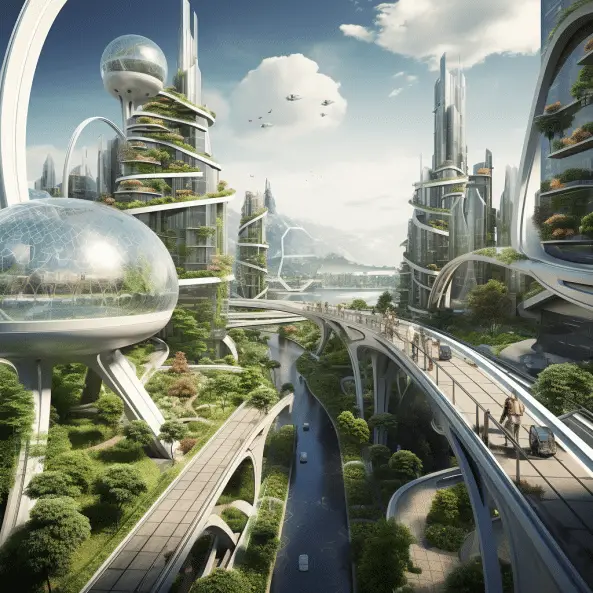
Conclusion
In conclusion, future-oriented designs is essential in shaping products and services that meet the needs of tomorrow, considering sustainability, addressing global challenges, and embracing innovative strategie.
Designing for the future requires a different approach as the world faces challenges such as pandemics and environmental disasters. To create solutions that are relevant and sustainable, designers need to consider what the future will look like and how it will be shaped by these challenges.
One way to design for the future is to look back at the past and learn from previous design practices. By understanding the successes and failures of the past, designers can inform their decisions and create designs that are rooted in experience.
Additionally, it is crucial to address issues like climate change, war, refugees, and mass surveillance in design. These global challenges have a significant impact on society and the environment, and designers have a responsibility to contribute to solutions that address these issues.
Future-oriented design
Another approach to future-oriented design is to apply user experience (UX) methods to our own lives. By creating a map of our past, analyzing our current self, setting values and goals, and visualizing our future vision, we can design experiences that align with our desired future.
Furthermore, it is important for designers to iterate and adapt as life is not static. The ability to evolve and respond to changing circumstances is crucial in designing for the future.
Other methods that can be employed in designing for the future include using “what-if” scenarios to explore alternative possibilities, employing design fiction to imagine alternate futures, and engaging in critical design to challenge assumptions and promote critical thinking.
Overall, designing for the future requires a proactive and strategic mindset, as well as a deep understanding of the societal and environmental challenges we face. By embracing innovative strategies and considering the long-term implications of our designs, we can create a future that is sustainable, relevant, and meets the needs of tomorrow.
FAQ
Q: How can I design for the future?
A: Designing for the future requires considering tomorrow’s needs and using innovative strategies to shape products and services that are relevant and sustainable.
Q: Why is future-oriented design important?
A: Future-oriented design is important because it focuses on sustainability and creating solutions that will remain relevant in the future.
Q: How can I learn from the past in design?
A: Learning from previous design practices can inform future-oriented design by providing valuable insights and lessons learned.
Q: Why is it important to address global challenges in design?
A: Addressing global challenges such as climate change, war, refugees, and mass surveillance in design is crucial for creating solutions that address real-world problems.
Q: How can I apply user experience (UX) methods to design for the future?
A: Applying user experience methods involves creating a map of our past, analyzing our current self, setting values and goals, and visualizing our future vision.
Q: Why is it important to iterate and adapt in design?
A: Life and circumstances are not static, so iterating and adapting in design allows for continuous improvement and relevance.
Q: How can “what-if” scenarios be used in design?
A: “What-if” scenarios can be used to explore alternate possibilities and envision different futures in design.
Q: What is design fiction, and how can it help in imagining alternates?
A: Design fiction involves using storytelling and speculative design to imagine alternate possibilities for the future.
Q: How does critical design promote critical thinking for the future?
A: By challenging assumptions and encouraging critical thinking, critical design helps us explore different perspectives and possibilities for the future.
Q: Why is a proactive and strategic mindset important in designing for the future?
A: Designing for the future requires considering both societal and environmental challenges and approaching them with a proactive and strategic mindset.



